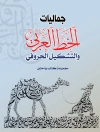In ‘George Cruikshank, ‘ William Makepeace Thackeray presents an incisive exploration of the life and artistic contributions of the renowned caricaturist and illustrator. Written in a witty and satirical style characteristic of Thackeray’s oeuvre, the book situates Cruikshank within the broader context of 19th-century English society, examining how his work reflected and critiqued the social and political issues of the time. Thackeray deftly combines biographical narrative with social commentary, using a richly descriptive language that paints a vivid picture of Cruikshank’s world, showcasing both the artist’s talent and the turbulent environment in which he operated. Thackeray, a contemporary of Cruikshank, was deeply influenced by the social dynamics of his era, often drawing upon his own experiences as a keen observer of English society. His background in art and literature, along with his commitment to social reform, provided him with a unique lens through which to appreciate and critique Cruikshank’s work. This insight allowed Thackeray to present a multi-faceted portrait of the artist, intertwining their lives through shared cultural and artistic pursuits. ‘George Cruikshank’ is an essential read for scholars and enthusiasts of 19th-century literature and art alike. Thackeray’s blend of biography and literary critique invites readers to engage with the transformative power of satire, making it an invaluable resource for understanding the interplay between art and society.
Yazar hakkında
William Makepeace Thackeray, born on July 18, 1811, stands as a renowned figure in English literature, noted for his astute satirical narratives that cleverly dissect the hypocrisies and absurdities of 19th-century society. Thackeray embarked on his literary career after studies at Cambridge, a sojourn in Continental Europe, and an unsuccessful stint as a lawyer, which culminated in financial ruin and a resultant turn to journalism. His experiences in law and journalism honed his incisive wit and narrative skills, evident in his writings. Best known for his novel ‘Vanity Fair’ (1847-48), Thackeray’s pen touched various genres, delivering novels, biographies, and essays flush with his signature irony and moral skepticism. A notable contribution to literary criticism and art history is his 1840 work on the English illustrator, ‘George Cruikshank’, a critical examination demonstrating both his aesthetic acumen and his interest in visual art. His conversational prose and vivid characterizations were laced with social commentary, distinguishing him from his contemporaries. Thackeray’s novels, including ‘Pendennis’ and ‘The History of Henry Esmond’, have entrenched him in the canon of English literature as an eminent Victorian novelist and satirist. His legacy, though often overshadowed by his peer Charles Dickens, endures through his poignant observations of human folly and penchant for societal critique. He died on December 24, 1863, leaving behind a robust collection of work that continues to engage readers and critics alike.












